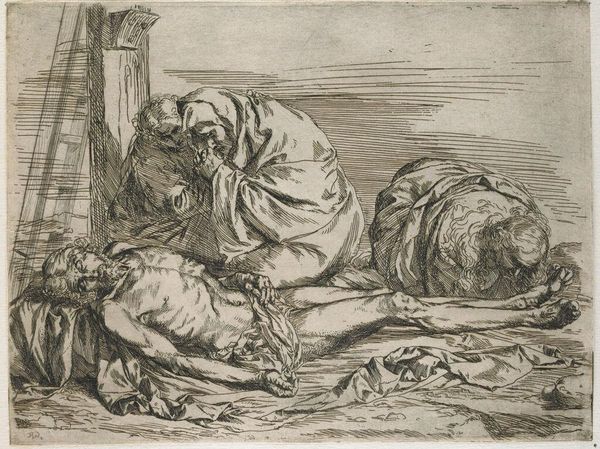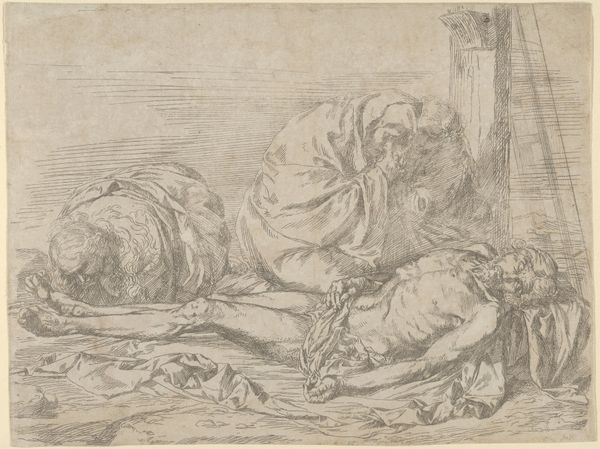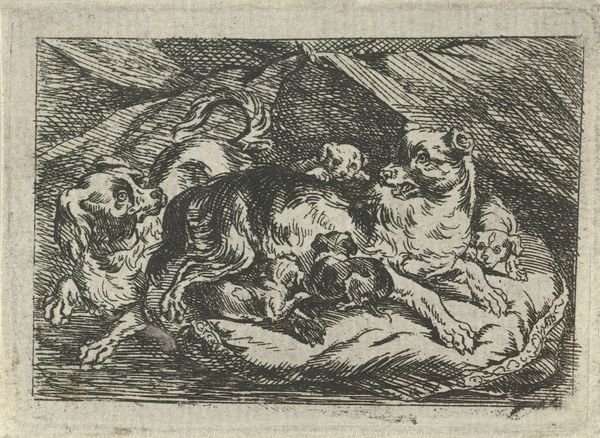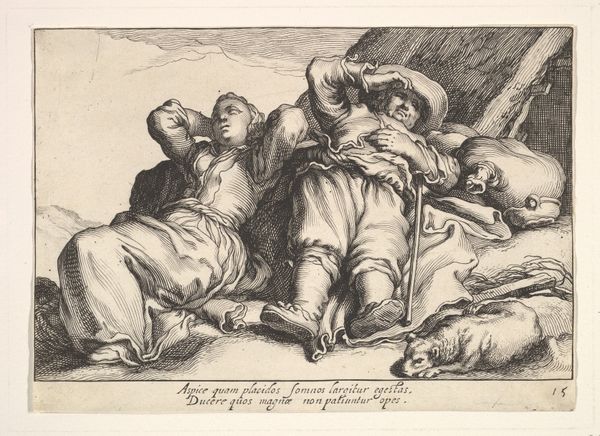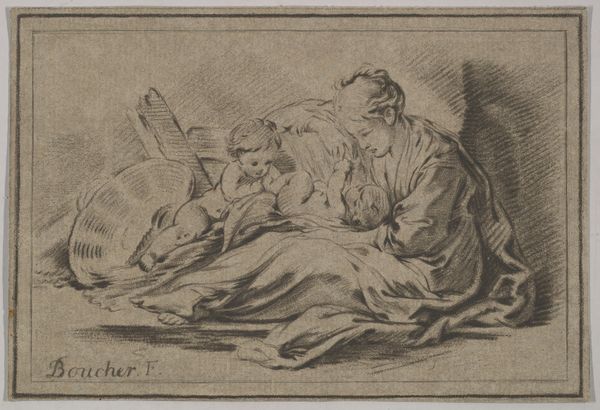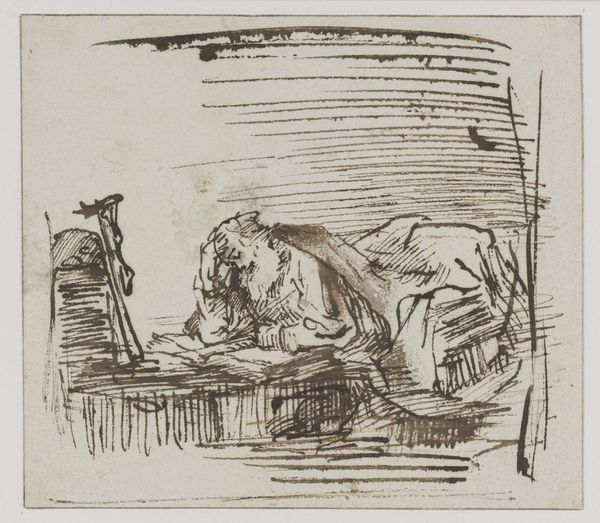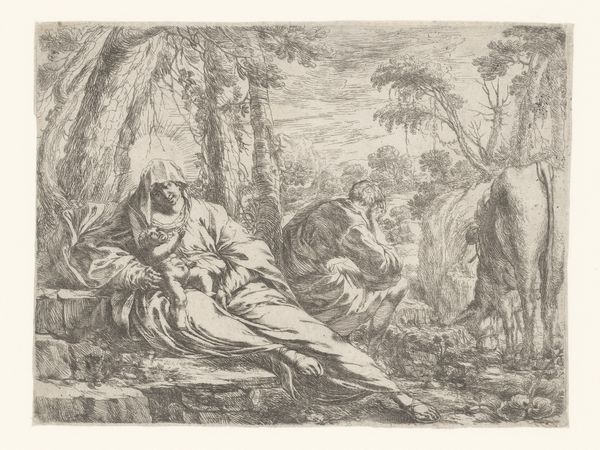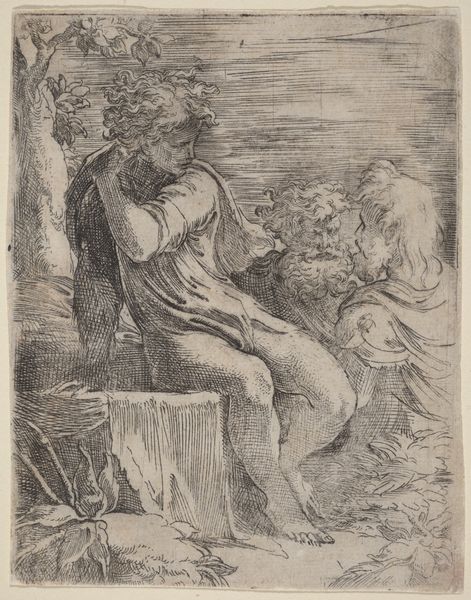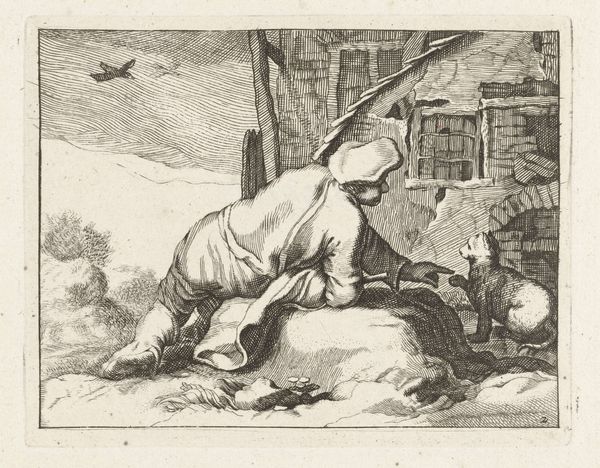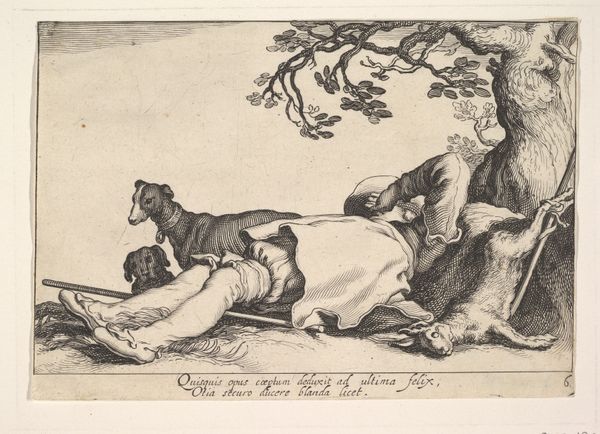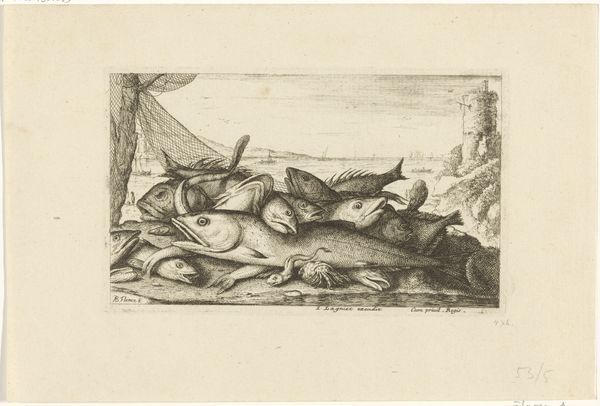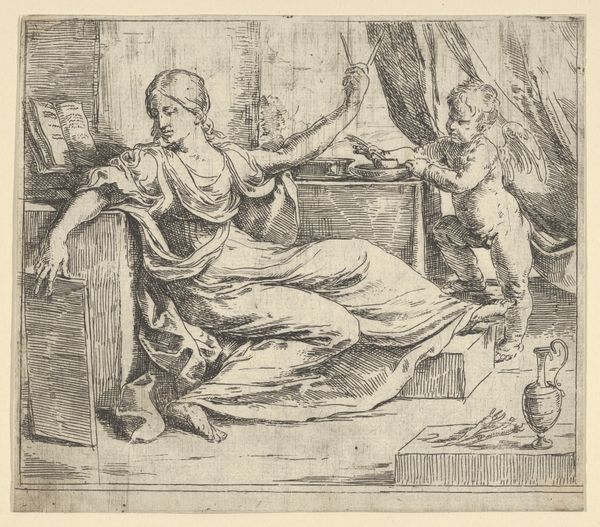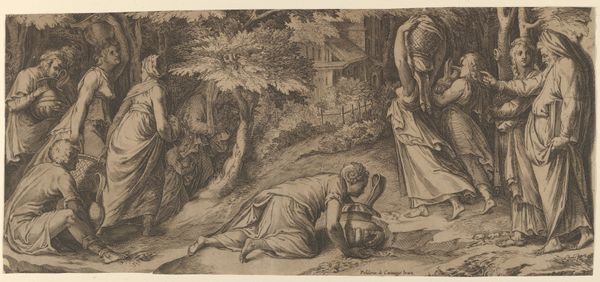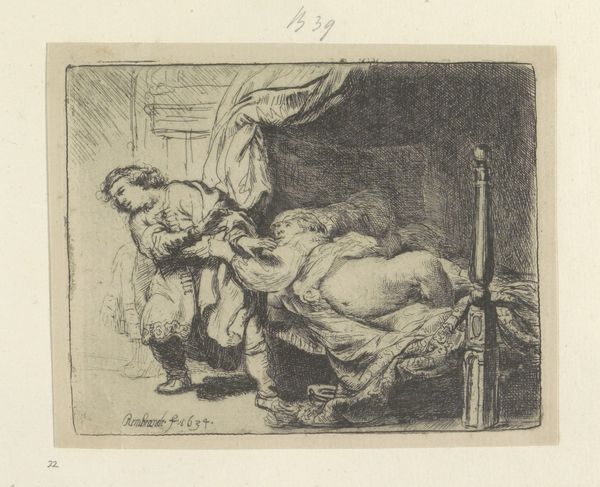
The Virgin, Saint John the Baptist, and Mary Magdalene weeping over Christ's dead body 1624
0:00
0:00
drawing, print, etching
#
portrait
#
drawing
#
ink drawing
#
narrative-art
#
baroque
# print
#
pen sketch
#
etching
#
pencil sketch
#
landscape
#
figuration
#
history-painting
#
virgin-mary
Dimensions: Sheet: 8 in. × 10 3/16 in. (20.3 × 25.8 cm)
Copyright: Public Domain
Editor: This etching by Jusepe de Ribera, created in 1624, depicts the Virgin Mary, Saint John the Baptist, and Mary Magdalene grieving over Christ's body. The starkness of the medium, just black lines on paper, emphasizes the raw emotion of the scene. What catches your eye in terms of its materiality or how it was produced? Curator: I am fascinated by the labor involved in creating this image through etching. Ribera's mastery lies in his ability to transform a metal plate, through the careful application of acid, into a powerful emotional narrative. Look at the way he uses line weight to create depth and shadow. It mirrors the uneven distribution of resources in society; access determines outcome. The materials themselves – the copper plate, the acid, the ink – each reflect different industries and levels of craftsmanship. How does understanding that impact your view of this piece? Editor: I hadn't really considered the socioeconomic layers present in the materials and labor. It's easy to get lost in the religious aspect and overlook the sheer skill and industry involved in creating this kind of print. So, is the fact that it's reproducible through printmaking important? Curator: Absolutely! Printmaking democratizes images, shifting the focus from unique, precious objects to more widely distributed commodities. The process mirrors the spread of ideologies during the Baroque period, where the Catholic Church invested in visual propaganda. Think about it: etching allowed for the mass production of religious imagery, making it accessible to a wider audience, influencing their beliefs through visual means. Editor: So the value isn't just in the artistic skill, but also in its accessibility and potential for distribution, which speaks to different forms of cultural capital? Curator: Precisely. This image, born from metal, acid, ink, and immense labor, served a specific function within the economic and religious landscape of its time. And studying the lines themselves lets us think more deeply about the social conditions surrounding its creation and reception. Editor: I never considered etching as having such a tangible connection to the material world and labor. Curator: It's a powerful reminder that art isn't just about beauty; it's also about the systems and processes that bring it into existence.
Comments
No comments
Be the first to comment and join the conversation on the ultimate creative platform.
